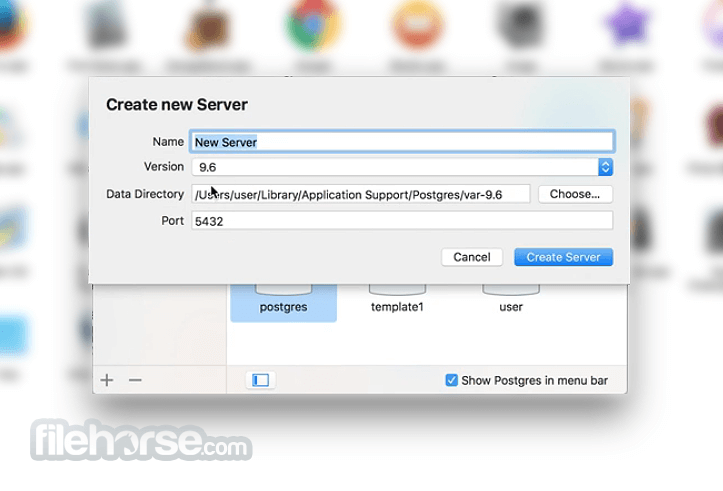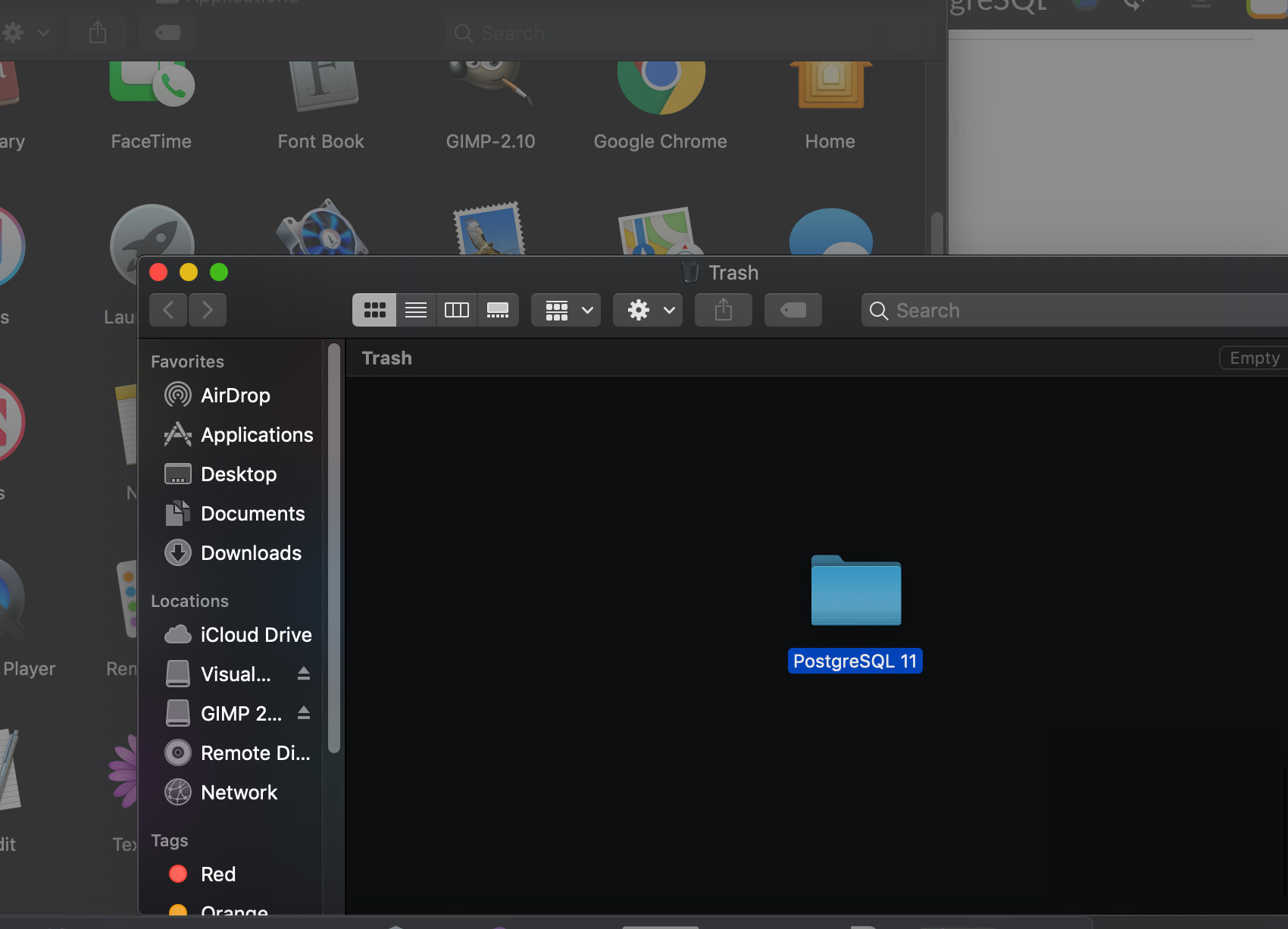
& $env:PGBIN\psql -username=scheduler -host=localhost -list timetable & $env:PGBIN\createdb -owner=scheduler timetable
Macos postgresql start password#
& $env:PGBIN\psql -command="CREATE USER scheduler PASSWORD 'somestrong'" -command="\du" Start-Process -FilePath "$env:PGBIN\pg_isready" -Wait -PassThru Set-Service -InputObject $pgService -Status running -StartupType automatic $pgService = Get-Service -Name postgresql* the pg_isready procedure is more complicated.Īs you probably noticed, we may skip sudo -u postgres prefixes since the current user has all the rights needed in this environment.There are not so many differences from Ubuntu for MacOS: Psql -command="CREATE USER scheduler PASSWORD 'somestrong'" -command="\du" postgres # Homebrew creates an account with the same name as the installing user, but no password PostgreSQL GitHub Action for MacOSĮcho "Check PostgreSQL service is running"Įcho "PostgreSQL service not ready, all attempts exhausted"Įcho "PostgreSQL service not ready, wait 10 more sec, attempts left: $i" Then, just like in the previous step, list the databases with psql for control.

Pay attention to the fact that sudo -u postgres allows us to not specify connection credentials, because a system user is allowed to connect locally without any restrictions. To create a timetable database, we use the createdb utility. For example, \dt – describe tables, \du – describe users, etc. 💡 To remember psql commands, try to decode them. Second, we output the list of users for control. We send two commands to it:įirst, we create the user. To create a scheduler user, we use a psql client in non-interactive mode. We use systemctl to start PostgreSQL and the pg_isready utility to check if the server is running. PGPASSWORD=somestrong psql -username=scheduler -host=localhost -list timetable Sudo -u postgres createdb -owner=scheduler timetable Sudo -u postgres psql -command="CREATE USER scheduler PASSWORD 'somestrong'" -command="\du" If: true # false to skip job during debug Of course, you may want to add more steps in real life, e.g., import test data, checkout, build, test, gather coverage, release, etc.

These actions were first written for pg_timetable testing, but now they are used as a template for all Cybertec PostgreSQL-related actions. However, you may use any of the environments available. In this post, I will use three of them: windows-latest, ubuntu-latest, and macos-latest.

Here is the table listing all available GitHub Actions Virtual Environments for a moment: Environment Handy, huh? 🙂 Available GitHub Actions Virtual Environments But this post will cover using the latest GitHub Actions Virtual Environments, which have PostgreSQL installed by default. I came up with many solutions: Docker-based actions, actions downloading binaries, etc. Even now, there is no easy way to debug actions. However, using a young product is a challenge. Not that I think CircleCI is a bad product I love to have everything in one place if possible.

I started to use them from the release day on as a replacement for CircleCI. GitHub Actions ( GHA) are altogether a piece of excellent machinery for continuous integration or other automated tasks on your repo.
Macos postgresql start windows#
CI createdb github macos postgresql psql ubuntu windows Intro


 0 kommentar(er)
0 kommentar(er)
